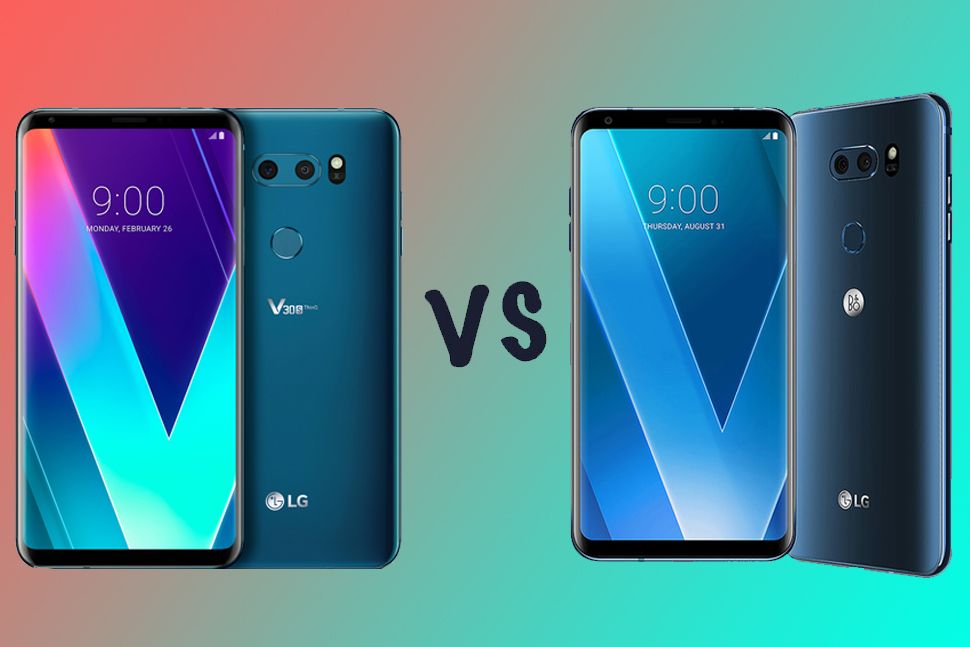LG has announced an update to the the V30 flagship at Mobile World Congress. The V30S ThinQ and V30S ThinQ+ bring a few minor internal upgrades to their predecessors, along with new integrated AI technologies.
With just under six months between them, how much has changed and is the V30S ThinQ worth the upgrade? Here is the LG V30S ThinQ compared to the LG V30.
lg v30
LG V30S ThinQ vs LG V30: Design
- Same design
- Both IP68 waterproof and MIL STD 810G
- Both glass and metal
The LG V30S ThinQ hasn't changed in terms of design so you'll get the same glass and metal premium design that came with the LG V30.
All devices have a front dominated by screen, a dual-camera setup on the rear with a circular fingerprint sensor below and a USB Type-C port is positioned at the bottom of the devices, while a 3.5mm headphone jack is present at the top.
The LG V30S ThinQ and the LG V30 measure 151.7 x 75.4mm and weigh 158g, though the V30S ThinQ is ever so slightly slimmer at 7.3mm compared to the V30's 7.6mm. We told you it was very slight.
Both the LG V30S ThinQ and the V30 are IP68 water and dust resistant and they both come with STD 810G drop protection. The new device does come in a couple of new colours though, with Moroccan Blue and Platinum Gray joining the line up.
LG V30S ThinQ vs LG V30: Display
- Same display
- 6-inch, Quad HD+, 538ppi
- OLED, HDR compatible
The LG V30S ThinQ and the LG V30 come with a 6-inch FullVision display, which features a Quad HD+ resolution for a pixel density of 538ppi so there is no difference in display either.
Both have an 18:9 aspect ratio and they both offer HDR10. The devices also both opt for an OLED panel which means bright and vibrant colours.
We didn't think the V30 had the best display on the market when we reviewed it so the V30S ThinQ may not quite deliver here again given it's the same display, but we also pointed out we thought there may be variation in the quality across the V30 devices so that's worth bearing in mind.
LG V30S ThinQ vs LG V30: Hardware
- More RAM and storage on V30S ThinQ models
- V30S ThinQ adds AI advantages
- Same processor, battery and audio capabilities
Finally some changes between the LG V30S ThinQ and LG V30 appear in the hardware, though not in terms of processor. Both devices run on the Qualcomm Snapdragon 835 platform, which although is no longer the latest, is still an excellent chipset.
There has been a boost in RAM in the V30S ThinQ and V30S ThinQ+ though, with both offering 6GB of RAM compared to the 4GB offered in the V30 and V30+. Memory has also increased, doubled in fact, with the V30S ThinQ offering 128GB and the V30S ThinQ+ featuring 256GB compared to the 64GB on the V30 and the 128GB on the V30+.
All devices offer microSD support for storage expansion up to 2TB and they all come with a 3300mAh battery capacity, which supports Qualcomm's Quick Charge 3.0 as well as wireless charging. They also all have a 32-bit Hi-Fi Quad DAC.
The V30S ThinQ also includes AI features though, including Vision AI which brings three new camera features and Voice AI that works in conjunction with Google Assistant to allow users to run apps and change settings though voice commands.
LG V30S ThinQ vs LG V30: Camera
- V30S ThinQ adds AI features
- All have dual rear cameras
- All have 5MP front camera
The LG V30S ThinQ and the LG V30 have the same camera sensors, though as we mentioned above, the V30S ThinQ comes with Vision AI for new camera features.
All V30 devices come with a dual rear camera made up of a 16-megapixel standard lens with an aperture of f/1.6 and a field of view of 71-degrees, coupled with a 13-megapixel wide-angle lens offering an aperture of f/1.9 and a field of view of 120-degrees.
The front-facing camera on all V30 devices is a 5-megapixel sensor with an aperture of f/2.2 and a field of view of 90-degrees.
The V30S ThinQ Vision AI adds AI CAM, QLens and Bright Mode features to the V30's already great camera. AI CAM analyses the subjects in the frame and recommends the optimal shooting mode, while QLens takes advantage of image recognition capabilities of the AI technology to scan QR codes and improve online shopping experiences.
Last but not least, Bright Mode allows the V30S ThinQ to use algorithms to brighten images for better photos without noise, rather than just measuring ambient light.
LG V30S ThinQ vs LG V30: Software
- Android Oreo with LG UX 6.0
- V30S ThinQ has AI enhancements
The LG V30 devices all run on Android Oreo with LG's UX 6.0 software over the top.
The main user experience will therefore be very similar between the devices, though with the AI enhancements, the V30S ThinQ will offer some differences, especially in terms of camera and voice commands.
LG has said "certain phones from LG will receive key AI features in future updates delivered over-the-air". It has not confirmed which devices these will be, but the V30 may well get the update in the future.
LG V30S ThinQ vs LG V30: Conclusion
There is very little difference between the LG V30S ThinQ and the LG V30 so an upgrade is probably not on the cards for many, unless a bump in RAM and internal memory are really important to you.
The design, display, camera sensors and processor all remain the same between the devices, with the V30S ThinQ simply adding some camera features, better voice command functionality, a bump in RAM and memory, along with a couple of extra colour options.

